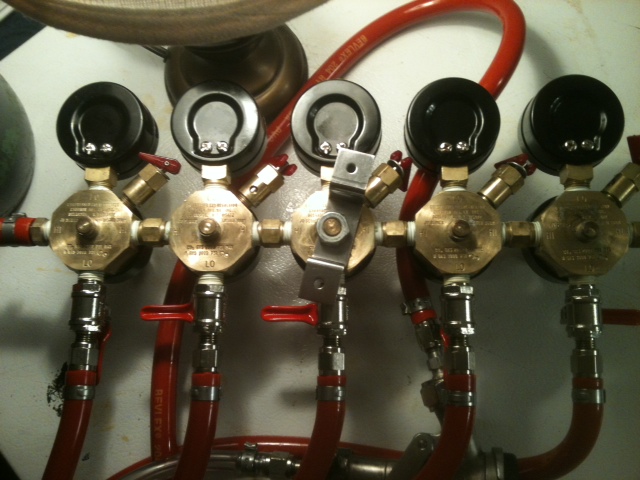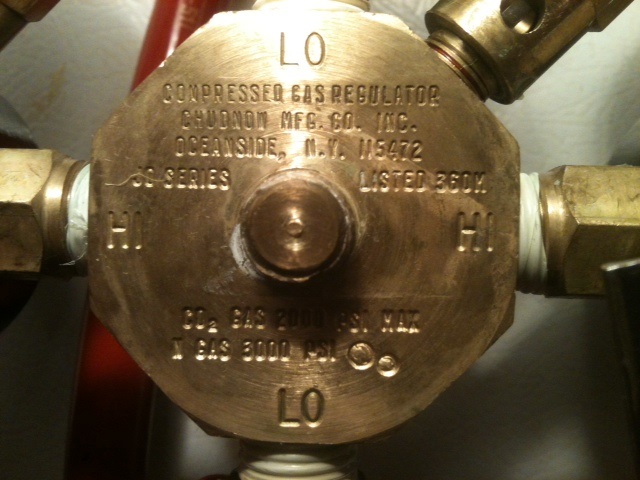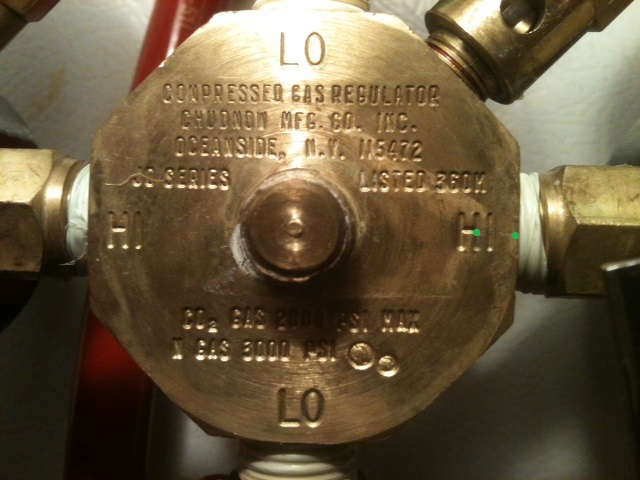I have been in the beer business for a while and I fix gas leaks all the time. I take pride in getting it done quickly and efficiently. So it was infinitely frustrating for me to have one in my personal kegerator and not be able to figure it out for months! So tonight rather than damn near climb into my kegerator for the 10th time, I unscrewed the regulator panel and yanked it out. As I was once again swabbing the threads and release valves, I flipped it upside down and spilled leak detector on the back of the regulator. Sure enough, bubbles started emerging from the SOLID back side of the regulator!!! Pics and video should explain how f'd up this is.
1st pic - what I'm working with, 5 secondary regulators flipped over
2nd pic - a close up of one of the two leakers
3rd - same close up, but the green dots mark the beginning and end of a fissure so small I had to take my glasses off to see it! The leak is occurring where the left green dot is, right in the middle of that engraved H!!! This happened in the exact same spot on two of my five regulators, so it is not a coincedence.
Video of this ridiculous leak: https://www.youtube.com/watch?v=fEIEuwXiFh0
I swear, just when you think you have seen it all...



1st pic - what I'm working with, 5 secondary regulators flipped over
2nd pic - a close up of one of the two leakers
3rd - same close up, but the green dots mark the beginning and end of a fissure so small I had to take my glasses off to see it! The leak is occurring where the left green dot is, right in the middle of that engraved H!!! This happened in the exact same spot on two of my five regulators, so it is not a coincedence.
Video of this ridiculous leak: https://www.youtube.com/watch?v=fEIEuwXiFh0
I swear, just when you think you have seen it all...










































![Craft A Brew - Safale S-04 Dry Yeast - Fermentis - English Ale Dry Yeast - For English and American Ales and Hard Apple Ciders - Ingredients for Home Brewing - Beer Making Supplies - [1 Pack]](https://m.media-amazon.com/images/I/41fVGNh6JfL._SL500_.jpg)


















